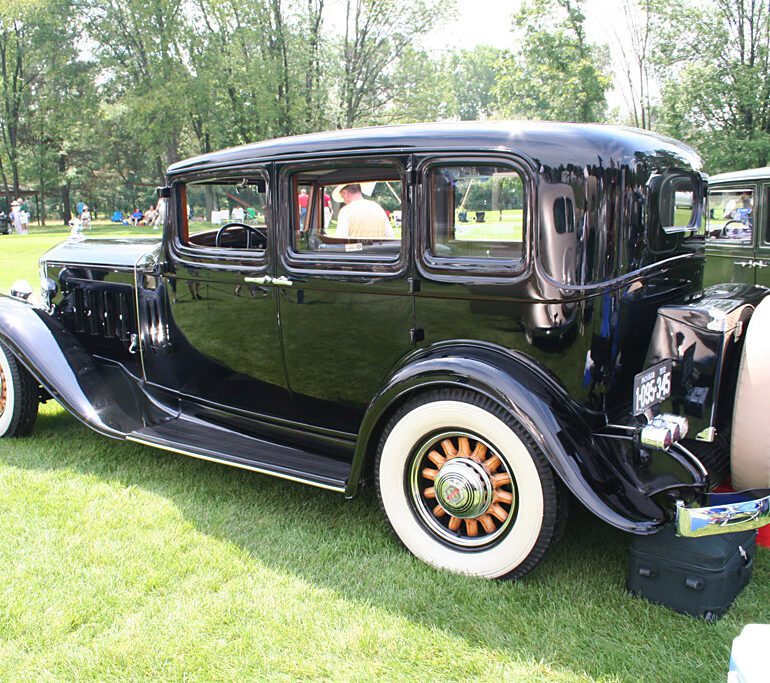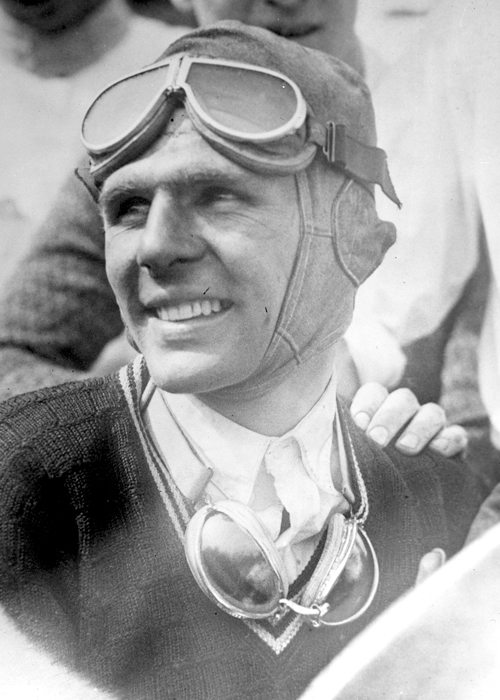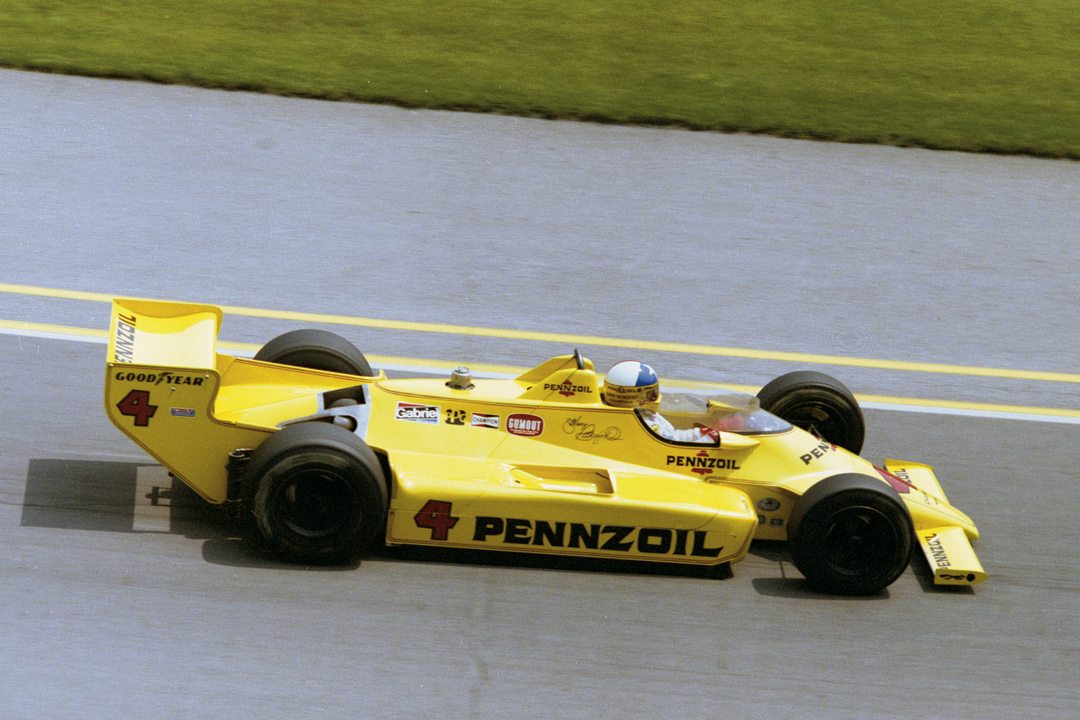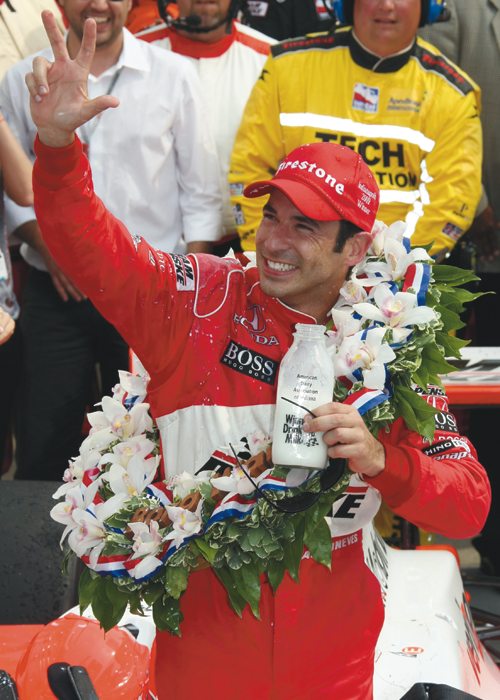We all know their names, and they all would tell you that we do because they won this one race. Who are we to argue? Sixty-seven different drivers have won the 99 Indianapolis 500s run to date, but just 10 have won it three times or more to demonstrate their mastery of the 2.5-mile four-cornered oval on the west side of the Hoosier capital. Although a total of 758 drivers have started an Indianapolis 500 Mile Race, these 10 have won 33 of the 99 runnings, but it’s unlikely any of them would actually claim to be a Master of Indy. Because their accomplishments top the pyramid of results from those 99 Indy 500s, however, we celebrate them here in this year of the 100th running of what the late Sid Collins—widely known as The Voice of the Indy 500—always called “The Greatest Spectacle in Racing.”
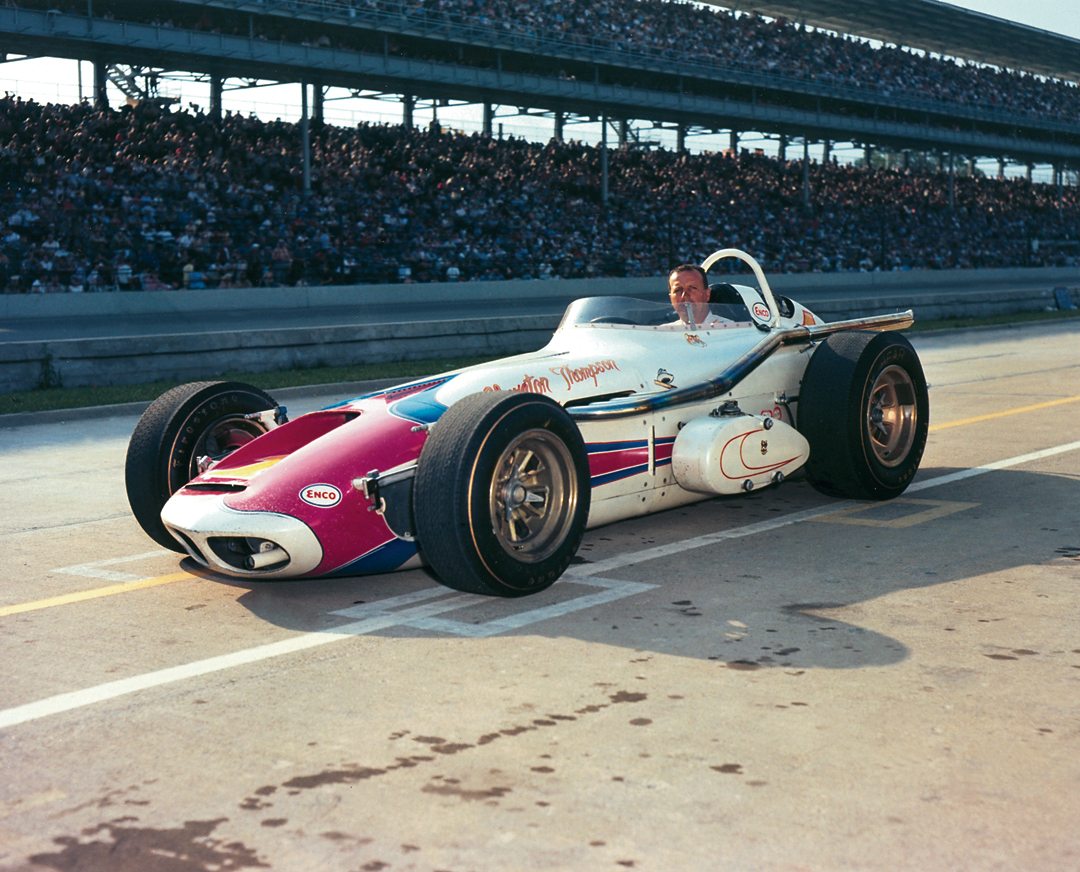
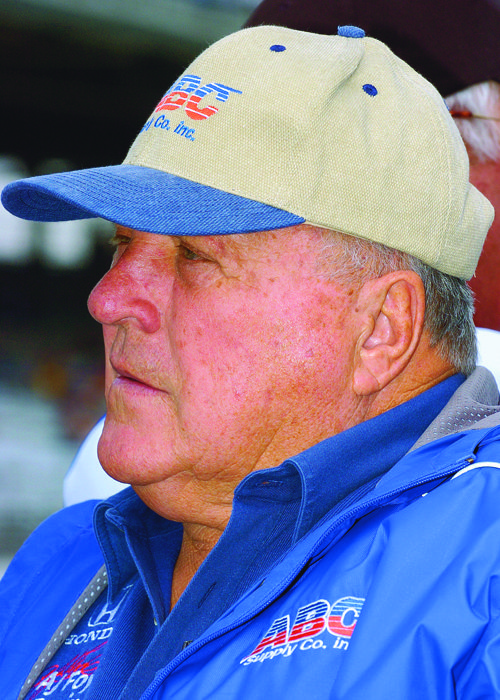
Laps Run – 4904, Laps Led – 555,
Races Led – 13, Pole Positions – 4,
Top-5 finishes – 10
Photo: Jim Hatfield
A.J. Foyt (1961, 1964, 1967, 1977) The irrepressible Texan is, of course, the first driver to win the 500 four times, his record-setting fourth victory in 1977 coming 16 years after his first in 1961. He also tops Indy’s all-time record books in multiple categories, including 35 starts, 4,904 laps completed and 13 races led—although his 555 leading laps stand only second to Al Unser’s 644. His four pole positions rank equal 2nd with Rex Mays and Helio Castroneves on that list, and he’s the only man to win in both front- and rear-engined machinery, as well as one of only three men to win the 500 as both driver and car owner. He remains an active team owner, continuing to field a two-car team today.
“I always dreamed that some day I would be good enough to make it into the 500,” Foyt will tell you. “I think that’s what every race driver hopes for, because the Indianapolis 500 is like the Kentucky Derby, you might have a good field this year and you might not, but it’s still the Indy 500. To me it’s the most prestigious race in the world, by far.”
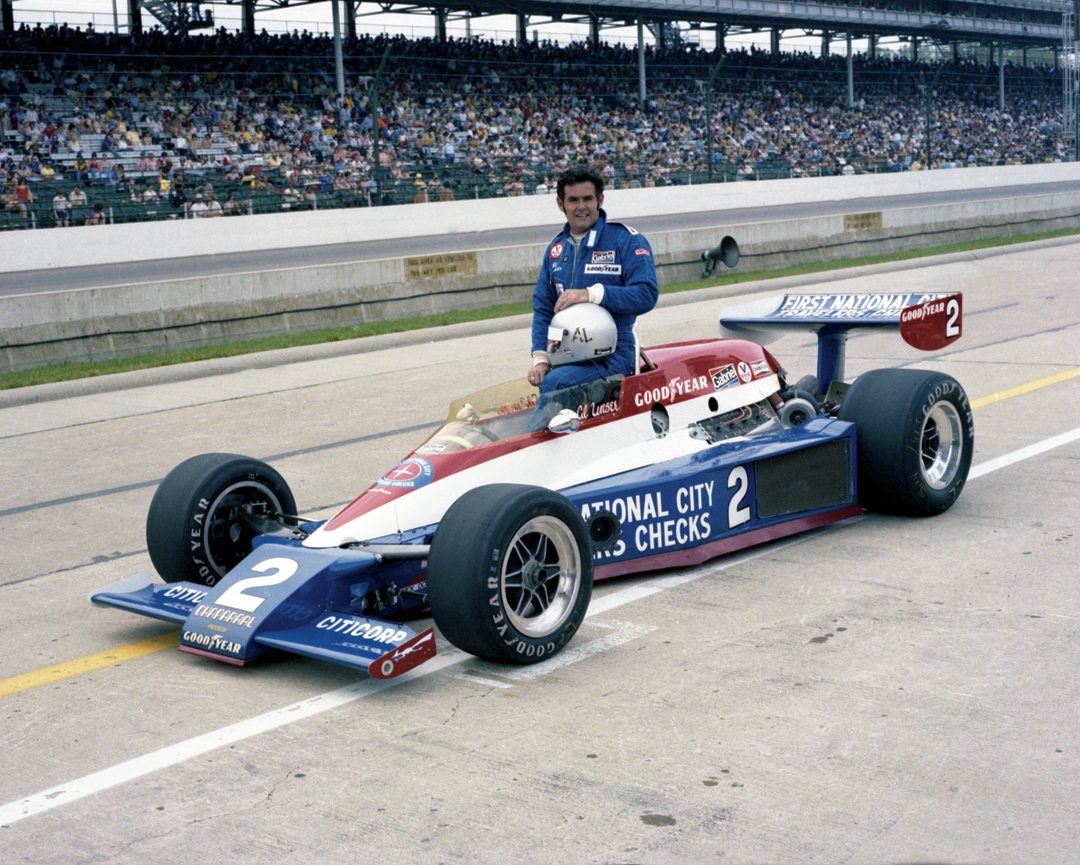
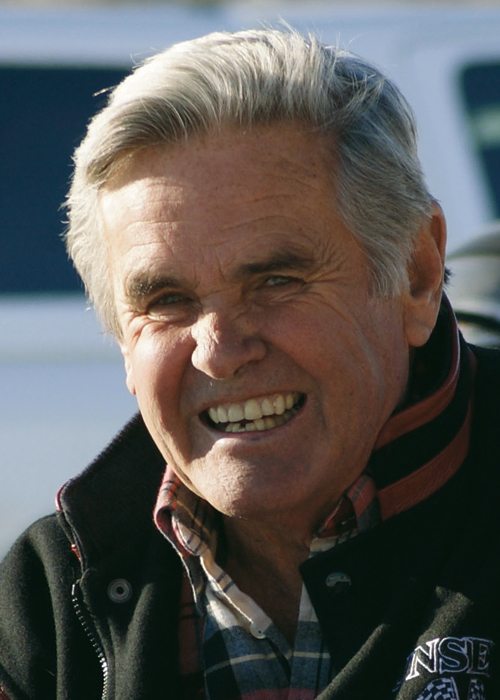
Al Unser (1970, 1971, 1978, 1987) The understated New Mexican always let his driving do his talking, and his four Indy wins were accomplished over the longest period of time, 17 years between the first in 1970 and the fourth in 1987, when he became the Speedway’s oldest winner, five days short of his 48th birthday. As noted above, he is the all-time leader in laps led at Indy with 644, and he also finished 18 of the 27 500s he started, winning his four 500s driving for three different teams.
“I always told myself, ‘If you don’t finish, you don’t get paid, Al,’” Unser wisely says. “And I was always trying to take care of my equipment, maybe not knowing what I was doing. In other words, you go out and race, yet I always tried to make sure I finished the race. Tried. If the car was a 5th-place car, I’d run 5th. I didn’t extend myself to run 4th and take a chance on crashing. If it was a front-running car, get me up in the top three and then I’ll stretch out the last little bit by taking the chance that I might crash.”
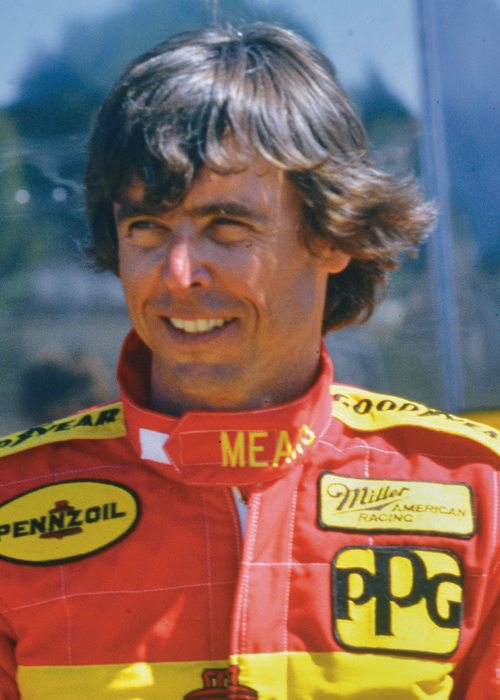
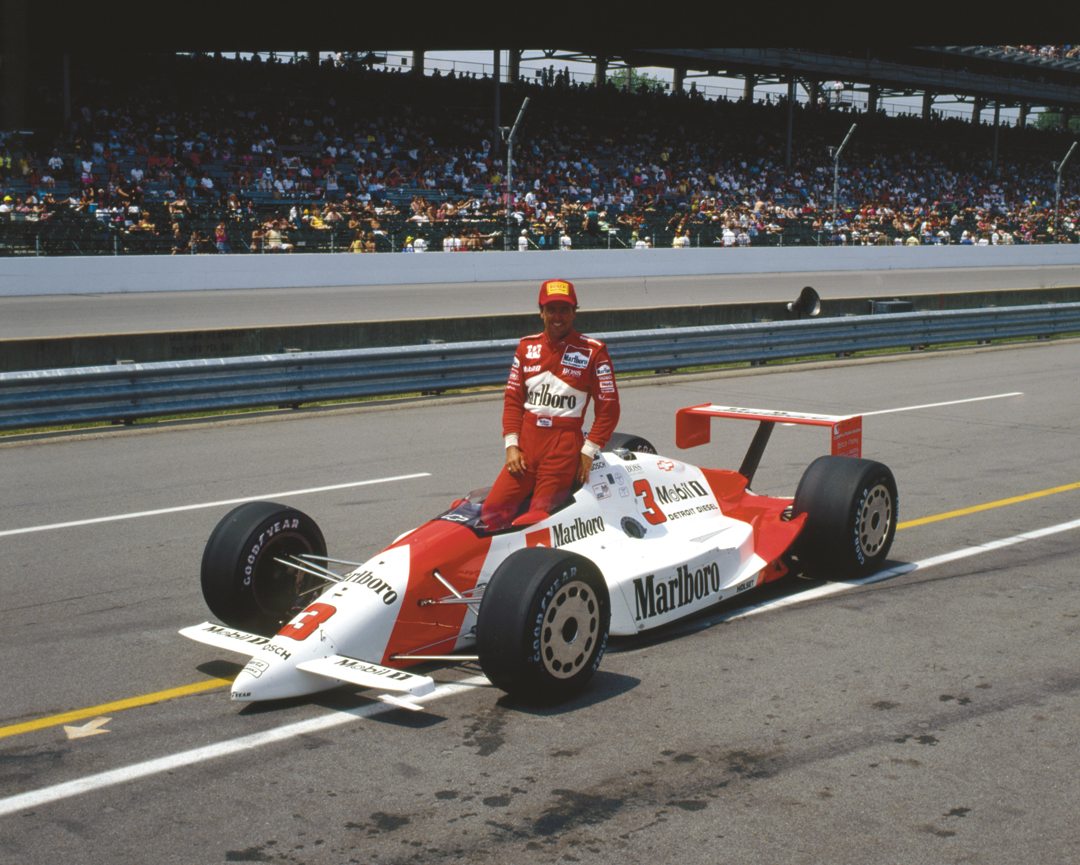
Rick Mears (1979, 1984, 1988, 1991) The laid-back Californian scored his four wins in the shortest time span of all, just a dozen years. After being named co-Rookie of the Year in 1978 he then won the race for the first time the following year. His six pole positions are the most of anyone in the 500’s 105-year history, and he shares the mark for setting the most New Track Records, at five, with Mario Andretti. All of his wins have come with Penske Racing, and his consistency is reflected in the fact he finished in the top five after nine of his 15 500 starts.
“My first impression was just Wow!” admits Mears. “The size, just the physical, intimidating size of the place was the first thing that really struck me. I didn’t know the history. I hadn’t grown up around it, hadn’t studied it. Walking out on that long front straightaway and looking down that long hallway to the left turn into the closet, was just awe-inspiring. Appreciation for the history of the place came with time, and that’s why I’ve always said that the fourth win is the highest on my list.”
THE OWNERS: As with the drivers and the car builders, the men who actually owned and entered cars at Indianapolis have written their own histories, with half a dozen of them winning three times or more.
This list is, of course, headed by Roger Penske, whose cars have claimed victory in an unchallenged record 16 Indy 500s, including the landmark 75th race in 1991, and last year’s 99th running. Penske Racing’s first triumph came in 1972 when Mark Donohue won driving a McLaren M16, and The Captain has made regular appearances in Victory Lane ever since, including three straight victories in 2001, 2002 and 2003, a mark he shares with Lou Moore.
Penske is famous for, if not originating then surely propagating, the mantra of “to finish first you must first finish,” and his success has been built upon careful attention to detail in all areas from personnel to preparation. It is no surprise that four of our 10 Masters scored at least one of their wins in cars entered by Penske Racing, as all four of Rick Mears’ triumphs, all three of Helio Castroneves’ and single wins for Al Unser and his brother Bobby were earned in machines from Penske Racing.
The second most successful car owner is Lou Moore, who hired Emil Diedt to create the front-wheel-drive Blue Crown Spark Plug Specials that won three straight 500s to close out the 1940s, with one of our Masters, Mauri Rose, winning in 1947 and ’48, and teammate Bill Holland scooping the big prize in 1949. Rose had also bagged his first win in 1941 in another of Moore’s cars, driving in relief of Floyd Davis. Moore’s team was among the first to practice pit stops in an effort to save time, a practice that has since become commonplace. In his early years, Moore himself was a nine-time starter in the 500 who qualified on pole position in 1932, but despite a pair of 2nd–place finishes and a 3rd, he was never as successful as a driver as he would be as an owner.
Third on the list is Chip Ganassi, who became a car owner after a serious accident ended his driving career and whose team has risen to challenge Penske Racing head to head in recent times, winning the 500 four times in a dozen years. Ganassi’s cars won in 2000 with Juan Pablo Montoya up, 2008 with Scott Dixon driving and 2010 and 2012 in the hands of Dario Franchitti. His effort emulates that of Penske’s in many ways, and he is revered by his personnel for giving them everything they need to do their jobs. The proof of concept can be found in the team’s impressive results.
A trio of three-time winners fills out our list, with Bob Wilke’s Leader Card operation winning in 1959, 1962 and 1968, while Pat Patrick’s eponymous team emerged triumphant in 1973, 1982 and 1989, and former Indycar champion Michael Andretti’s team collecting the hardware in 2005, 2007 and 2014.
Wilke, whose Leader Card paper products company sponsored his cars, was among the first to utilize racing to promote commercial products, and is probably best known for assembling the successful “Flying Ws” team along with driver Rodger Ward and crew chief A.J. Watson. Patrick was a force in the sport for decades, helping with leadership on the organizational side while regularly challenging Penske’s supremacy on the track. After a brilliant career as a driver, Michael Andretti has subsequently enjoyed further success as a car owner, making three visits to Victory Lane that he was never able to do as a driver.
• 16 – Roger Penske (1972, 1979, 1981, 1984, 1985, 1987, 1988, 1991, 1993, 1994, 2001, 2002, 2003, 2006, 2009, 2015)
• 5 – Lou Moore (1938, 1941, 1947, 1948, 1949)
• 4 – Chip Ganassi (2000, 2008, 2010, 2012)
• 3 – Bob Wilke (1959, 1962, 1968)
• 3 – Pat Patrick (1973, 1982, 1989)
• 3 – Michael Andretti (2005, 2007, 2014)
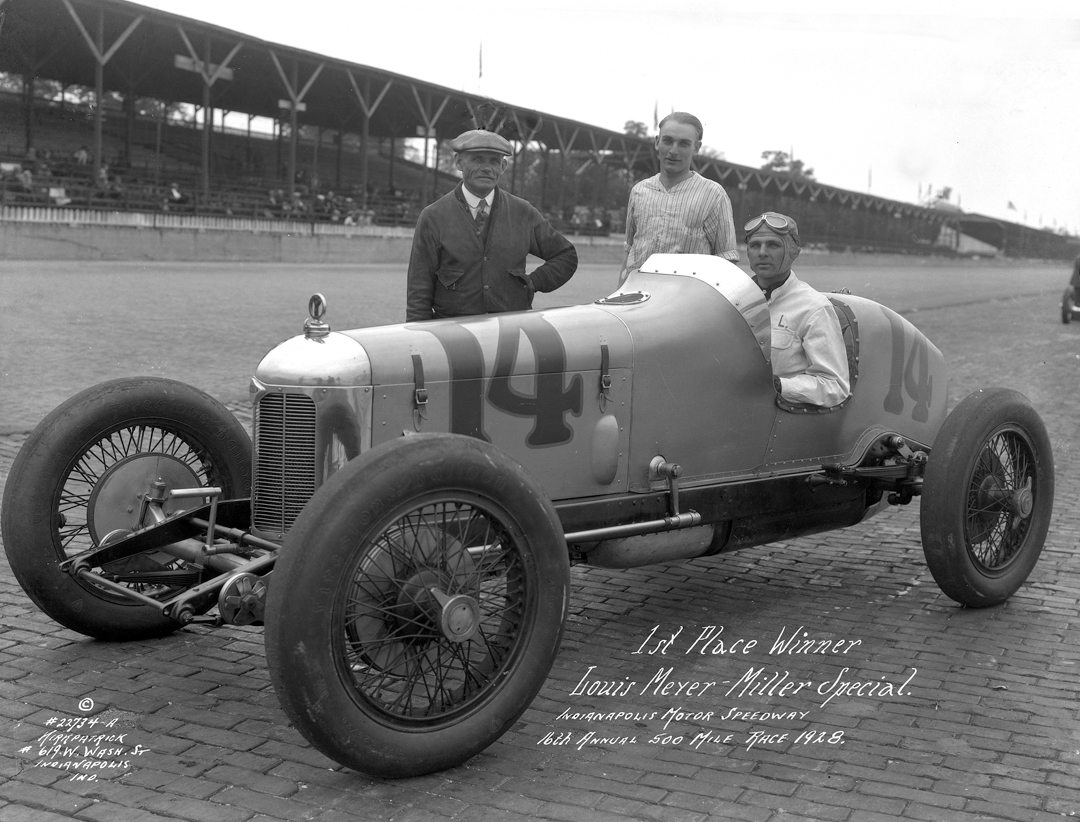
Louis Meyer (1928, 1933, 1936) The first driver to win three 500s was New York-born, California-bred Meyer. His first, in 1928, came in his first start, though he’d relieved Wilbur Shaw the previous year. While celebrating his second win in 1933 he initiated Indy’s tradition of drinking milk in Victory Lane, and in ’36 became the first to receive the Borg-Warner Trophy. Meyer and partner Dale Drake subsequently took over manufacture of the ubiquitous Offenhauser engine, and serviced Ford’s Indy V8 once it became a customer engine.
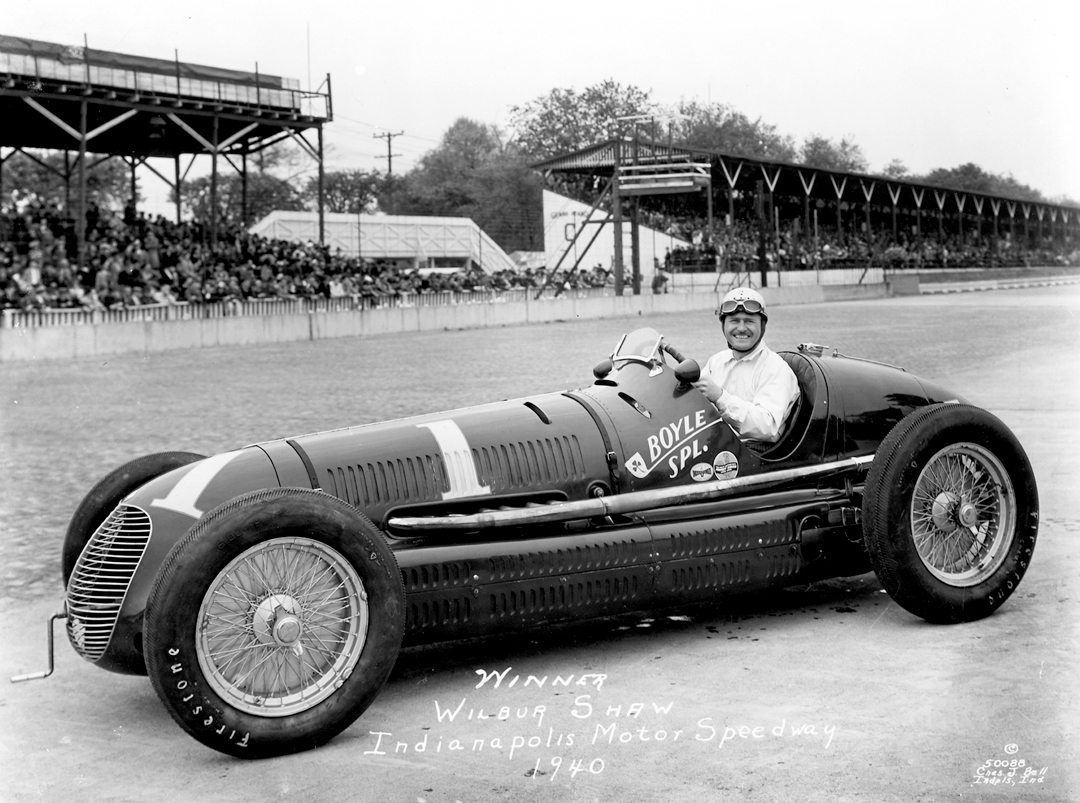
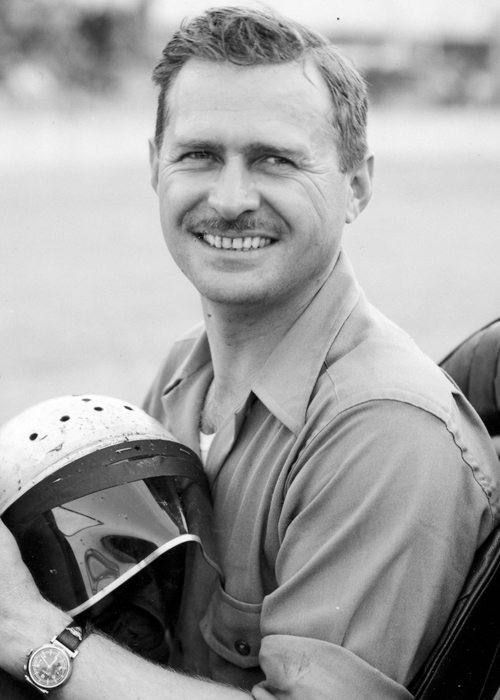
Laps Run – 2019, Laps Led – 508,
Races Led – 7, Pole Positions – 0,
Top-5 finishes – 7
Photo: IMS Photo
Wilbur Shaw (1937, 1939, 1940) Shaw needed only four years to collect his three Indy wins, but the homegrown Hoosier could easily have won five straight as he finished 2nd in 1938 and was leading in 1941 when a wheel set aside as suspect failed because warning markings had been washed off as firemen fought a race-morning blaze in Gasoline Alley. After retiring from driving Shaw saved the Speedway from ruin after WWII by enticing Terre Haute businessman Tony Hulman to purchase and refurbish the place.
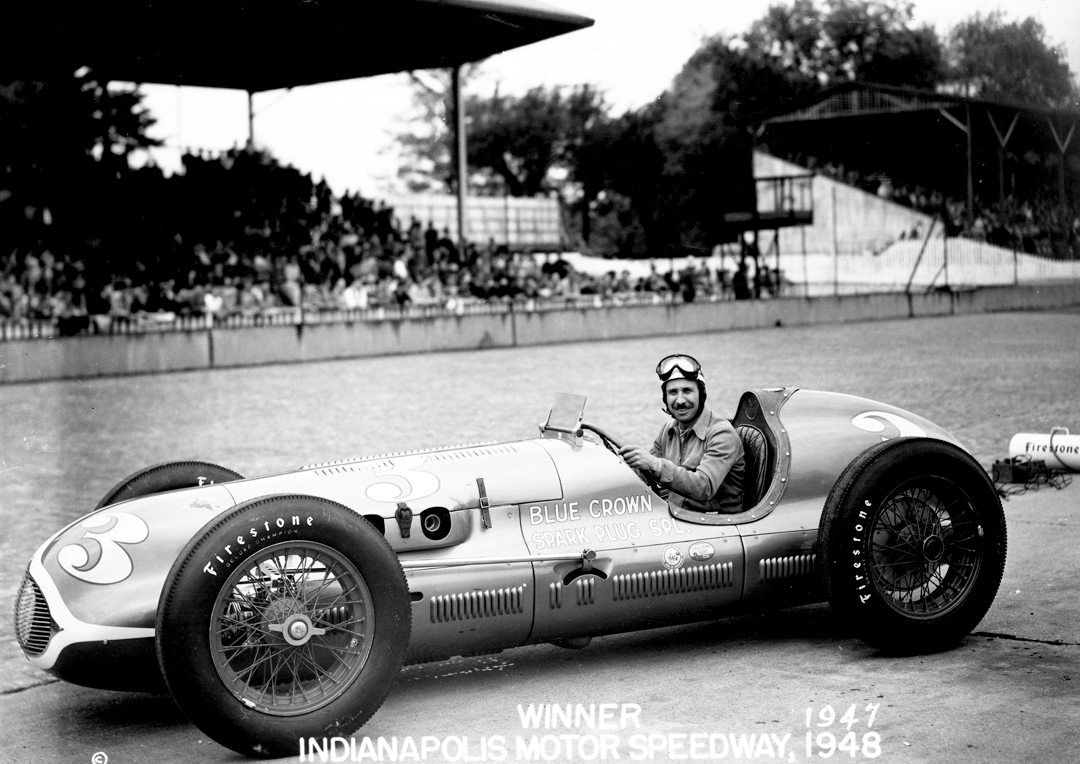
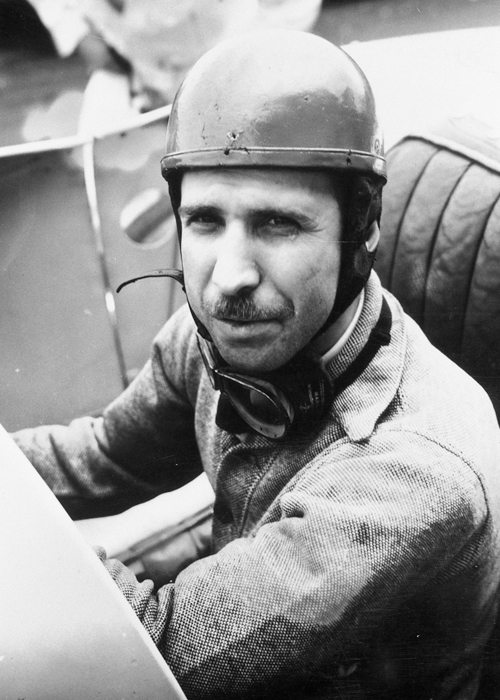
Laps Run – 2198, Laps Led – 266,
Races Led – 7, Pole Positions – 1,
Top-5 finishes – 6
Photo: IMS Photo
Mauri Rose (1941, 1947, 1948) The first of the wiry Ohioan’s three wins came in 1941 when he relieved teammate Floyd Davis—running 14th at the time—and drove on to victory. When he took back-to-back triumphs with Lou Moore’s front-wheel-drive Blue Crown Specials in 1947 and ’48, he became only the second driver to post consecutive wins. Upon retiring from the cockpit he worked for automakers Studebaker and General Motors in various capacities, including helping develop GM’s turbine-powered Firebird concept car.
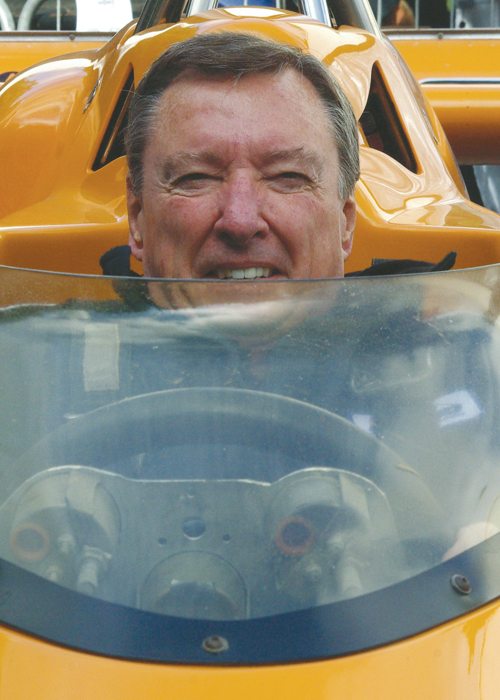
Laps Run – 2792, Laps Led – 296,
Races Led – 8, Pole Positions – 3,
Top-5 finishes – 4
Photo: Courtesy Goodwood
Johnny Rutherford (1974, 1976, 1980) Kansas-born Lone Star J.R., a sprint-car star, may have needed a decade to score his first Indy win, but within six more years he had gathered up three of them. The first two came when he was the works driver for the McLaren factory team, and he drove Jim Hall’s groundbreaking Chaparral 2K to the third. Rutherford’s 24 starts rank him third among our Masters, and his three pole position starts are a clear indicator of his essential speed.
THE CAR BUILDERS: Just as our 10 drivers have demonstrated their mastery of the Indianapolis Motor Speedway, so too have a trio of car builders whose finely crafted machines scored multiple victories there. Topping the list with six wins apiece are Harry Miller and A.J. Watson.
Miller’s finely crafted jewel-like creations were victorious in 1923, 1926, 1928, 1929, 1933 and 1934, and because Miller is the only one of our trio who also manufactured engines, he can count another six wins as an engine supplier. Miller’s “best” year was 1928, when 24 of the 29 starters drove Millers, including winner Louis Meyer, who led a sweep of the top four placings that stretched to 12 of the first 14 finishers.
During the seven-year period between 1923 and 1929, 128 of 191 Indy starters were Millers, or 67 percent of the field. Over the two decades between 1922 and 1941, 216 Miller cars were entered at Indy—most with Miller engines as well—so that over the entire 20-year span 35 percent of the cars racing at Indy were Miller’s. He also entered a pair of rear-engined cars in 1939, one of which qualified, becoming Indy’s first rear-engined car.
Watson’s Offenhauser-powered roadsters (or copies thereof) also won six 500s, coming home first in 1956, 1959, 1960, 1962, 1963 and 1964. Three of those wins were taken with Watson also serving as crew chief for first Pat Flaherty in ’56, and then Rodger Ward in ’59 and ’62. Watson’s “best” year, in terms of numbers, was 1963, when 14 Watsons and five copies added up to 19 of the 33 starters, with Parnelli Jones driving one to victory.
Between 1961 and 1964, the only double-digit years for Watsons, 48 of 132 starters were Watson chassis, or 36 percent. When the Watson copies are added in—18 total cars—it makes for 66 of 132 or exactly half of the starting fields.
All of Frank Kurtis’ five wins were scored in the early 1950s, when a Kurtis Kraft car wound up in Victory Lane every year but 1952—even then he almost won as Bill Vukovich was leading late in the first Kurtis roadster when his steering failed. Kurtis didn’t win in 1956 either, but that year was his high-water mark with Kurtis chassis occupying 22 of the 33 starting spots, or 66 percent.
Between 1941 and 1965, more than a third of the cars that ran at Indianapolis—237 of 690 or 34 percent—were Kurtis-built. In each of the six years between 1952 and 1957, more than 20 of the 33 starters came from Kurtis’ shops in Los Angeles and Glendale, California. That added up to 125 of 198 or 63 percent.
The top chief mechanic in Indianapolis history is George Bignotti, whose cars won seven races with five different drivers. A.J. Foyt (1961, 1964) and Al Unser (1970, 1971) both won twice in cars prepared by Bignotti, while his other three winners were Graham Hill in 1966, Gordon Johncock in 1973 and Tom Sneva in 1983.
All four of these men stand as giants in the history of the Indianapolis 500.

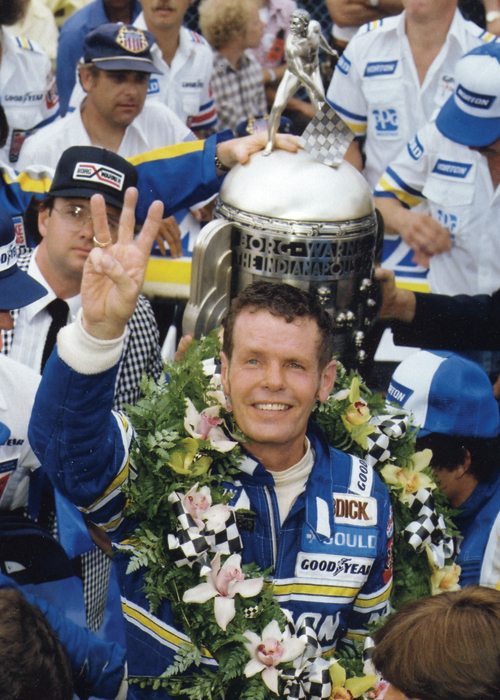
Laps Run – 2792, Laps Led – 296,
Races Led – 8, Pole Positions – 3,
Top-5 finishes – 4
Photo: Courtesy Goodwood
Bobby Unser (1968, 1975, 1981) The ebullient New Mexican got to Indy two years before his younger brother and also took the first of his three victories two years before Al, but ultimately fell one victory short of his sibling. His three wins came with three different teams, and in 1972 he drove Dan Gurney’s Eagle to a New Track Record that eclipsed the previous mark by more that 17mph! He is the only driver to win the 500 in three different decades.
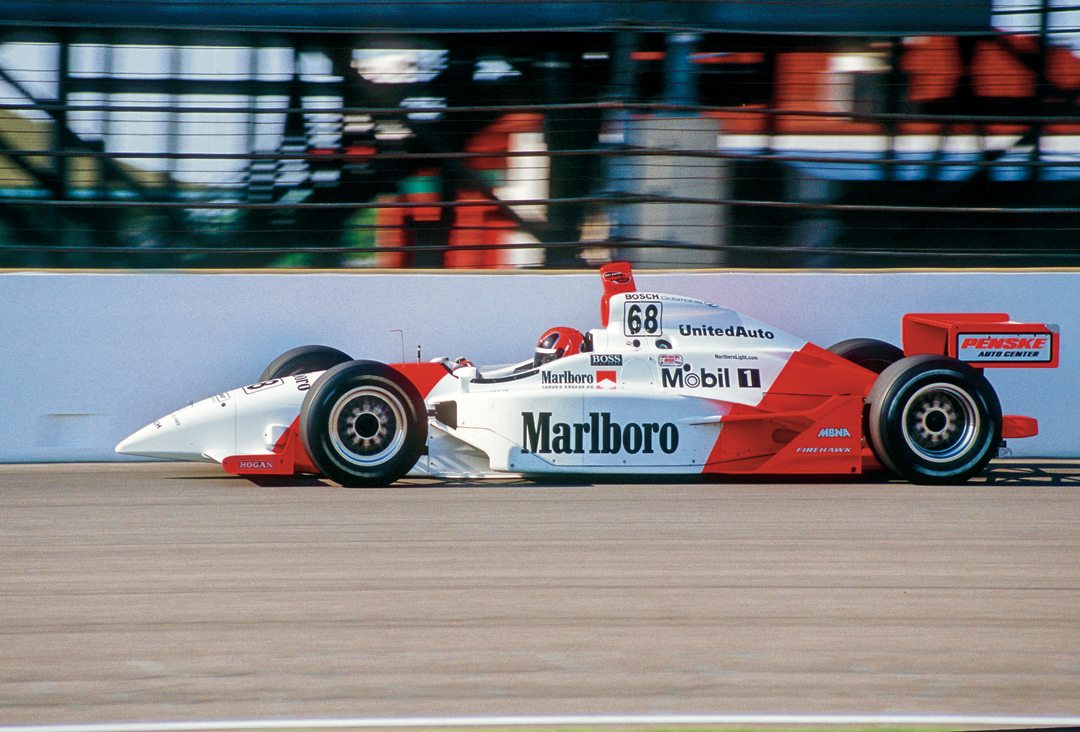
Helio Castroneves (2001, 2002, 2009) When it comes to making a big splash at the Speedway, this exuberant Brazilian not only became the seventh driver to win the 500 as a rookie, in 2001, but he then became the first and only one to win his second start as well. Then he finished 2nd in his third start. His four pole positions rank him equal second in that category with Foyt and Rex Mays, and since he is still active, those numbers should probably be written in pencil as they could grow.
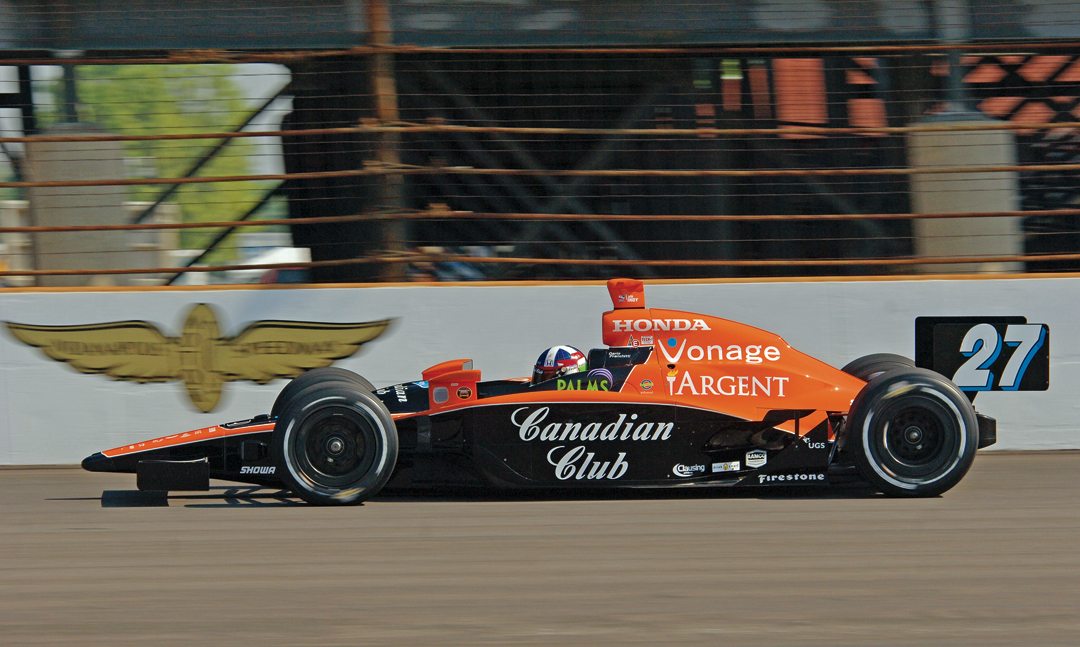
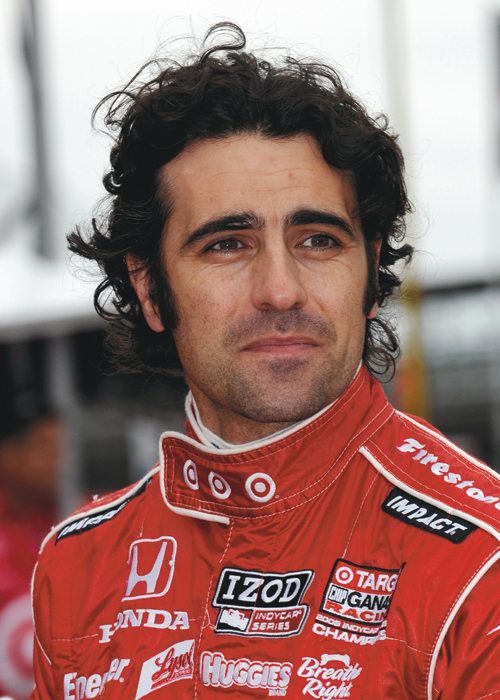
Laps Run – 1940, Laps Led – 329,
Races Led – 7, Pole Positions – 0,
Top-5 finishes – 3
Photo: Jim Hatfield
Dario Franchitti (2007, 2010, 2012) Indy’s winningest Scot needed five starts before he collected his first 500 victory in 2007, but then he quickly established an every-other-year program so that he also won his seventh and ninth starts in 2010 and 2012. His “Indy window” was cut short by the CART-IRL “Split,” a season in NASCAR and career-ending injuries suffered in the Houston Indycar race at the end of the 2013 season, but he still won three of his 10 starts at the Speedway.
SPECIAL MENTION: While our 10 Masters all surely deserve the designation, another handful of drivers have shown similar mastery, but were, for a variety of reasons, denied similar success. That group includes Bill Vukovich, Parnelli Jones, Mario Andretti, Juan Pablo Montoya and Arie Luyendyk.
Vukovich (below) could easily have won four of his five starts at the Speedway. The “Mad Russian”—triumphant, of course, in 1953 and ’54—was also leading until a late mechanical failure put him into the wall in ’52, and running up front until ensnared by his fatal accident in 1955. Beyond the fact that his fellow drivers considered him The Man to Beat, the most telling statistic of Vukovich’s mastery is that of the 676 laps he ran during his five starts at IMS, he led 485, an astonishing 72 percent.
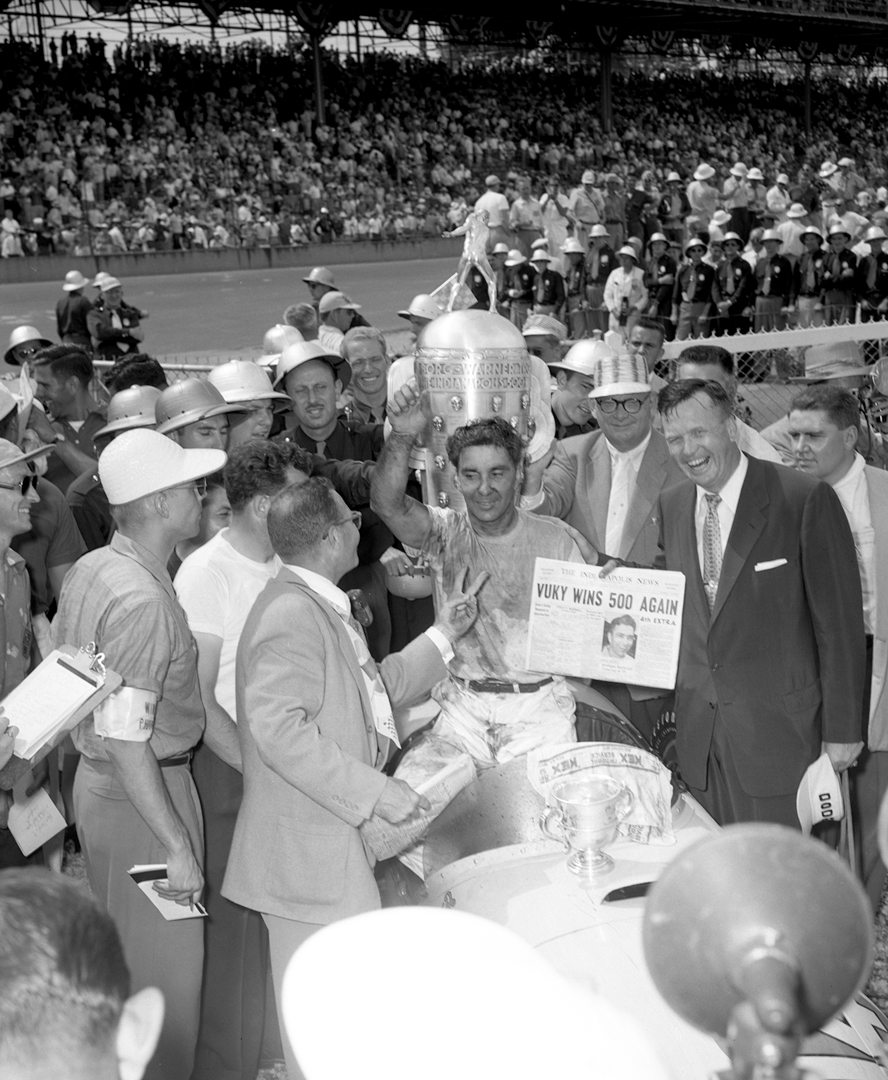
Jones (bottom) made but seven starts at Indy, winning only once, in 1963 but, like Vukovich, might have won three other times had the breaks gone his way. Co-Rookie of the Year in ’61, he cracked the track’s fabled 150 mph barrier to claim pole position the next year, then led at will until brake failure forced him to slow—but still finished 7th. In ’64 he and Foyt were dueling for the lead when a freak pit fire took him out and Foyt went on to win. In ’67 he’d virtually lapped the field with the STP Turbine car when its gearbox failed with four laps to go. Percentage-wise, Jones ranks second to Vukovich, leading 44 percent of the laps he ran.
Like Jones, Andretti has but one Indy 500 victory (not counting the disputed 1981 result), but he showed he knew his way around the 2.5-mile speedbowl from the very beginning. He finished 3rd as Rookie of the Year in 1965, took pole but broke early in both ’66 and ’67, then won in ’69. How he has no more than one victory is nearly unfathomable, as the disputed ’81 race, his 2nd–place finish to Spin-and-Win Danny Sullivan in ’85 and his retirement while leading handily late in ’87 were three great opportunities lost. His 29 Indy starts rank second only to Foyt’s 35.
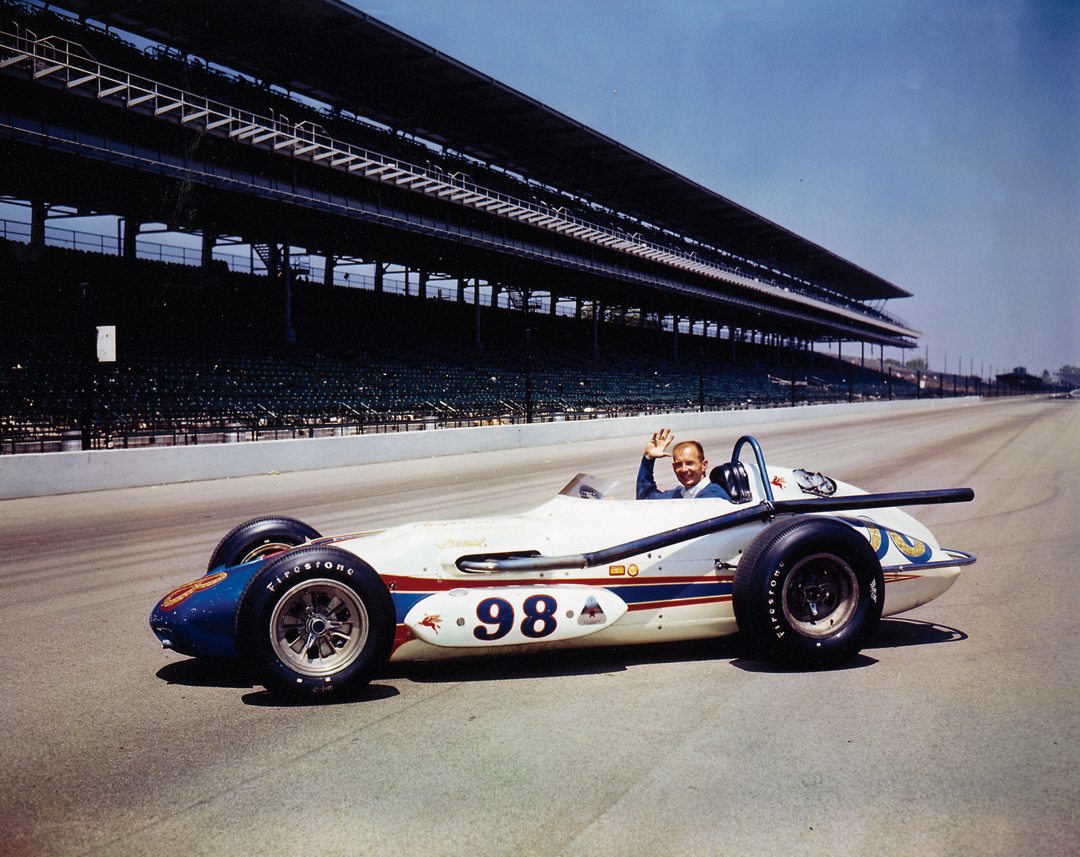
A more modern driver who has demonstrated similar mastery over a shorter time span is Montoya. Last year’s winner has won two of his three Indy starts, including his dominant Rookie of the Year effort in Y2K. In each of those races he has completed all 200 laps. Since he remains active, his place on our list is marked in pencil. Although from a smaller sample size, his leading-lap percentage of 32 ranks him 3rd behind only Vukovich and Jones.
Luyendyk won two 500s and was a constant contender throughout the later stages of his career. Rookie of the Year in 1985, he won the 1990 race with strategic mastery, then repeated in 1997. The year before that, however, he established the one- and four-lap qualifying records of 237.498 mph and 236.986 mph, respectively, that still stand 20 years later thanks to a rule change. He thus remains the fastest driver in Indy history.


